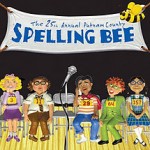Last Friday, I was on Sheila Liaugminas’s Relevant Radio show (“A Closer Look”) with a couple other bloggers from the Catholic channel here (Calah Alexander, Sam Rocha, Betty Duffy). We all sat down for a roundtable on sex-ed (the mp3 can be found here).
The format was a little unconventional. Instead of Sunday-morning-political-show-style crosstalk, where all the participants speak in dialogue (frequently overlapping dialogue) and question or build on the previous speaker’s comments, Sheila’s show had each person speak uninterrupted for a while on a single question. The next blogger often addressed a new point, and we didn’t ask each other follow-ups.
As a result, we sure didn’t design a new comprehensive sex-ed curriculum, but I noticed something that might help defuse that fight a little. When we talked about what sex ed was meant to accomplish, we all brought up very different goals:
- Public health: Reduce the transmission of disease, give students tools to reduce their risk, make risks visceral enough to constrain risky behavior, etc
- Integrating sexuality into life: Oh gosh, what’s happening to your body, what should you make of your sexual feelings (in more contexts than sex-having), counteracting sex-makes-you-dirty/worthless
- Gender relations: Counteracting prevalent harmful narratives (women’s sexuality is depraved/disgusting), do broad gender differences mean we should use slightly different framings?
- Romantic relationships: Now that sex is on the table, how does it fit into what you’re already doing to respect a partner? What are common emotional risks and pitfalls? What are good safeguards?
- Philosophy: How has sex/eros/love been treated across cultures? How do you know which tradition had it right (if any)? How can sexuality be a lens on what it is to be human?
- and plenty more….
Once you start listing them all out, it’s not obvious that any one class could satisfy all of these goals, but they’ve all ended up implicitly grouped. And, what’s worst, we tend not to reference these goals explicitly when we argue about how to structure a sex-ed program. People are likely to fall prey to the illusion of transparency. We say we want a good sex-ed program, that teaches kids what they need to know, or even that they need to approach sex responsibly, and assume that everyone swaps out those italicizes phrases in the same way we do.
It’s the same problem that Arnold Kling is trying to solve with his The Three Languages of Politics. You have to find ways to restructure the discussion so you can catch a glimpse of what your interlocutors are actually trying to protect, the thing that’s so obviously valuable that it’s hard for them to remember to explain it. Once your cards are on the table, it’s easier to negotiate and find solutions that satisfy all (or nearly all) of these goals, even if they all don’t quite fit in one sex ed class together.
I’m tempted to try to slip my philosophy bullet point into the social studies curriculum, instead: “How did different views of eros shape culture? Which voices weren’t included in the debate? What prompted reframes and new ideas? What’s left out of our discussion today? What seems like cruft left over from the last problem we tried to solve — is that pressure still present?
But, until we pause for a moment to explain what exactly we’re trying to teach, I doubt it will help much for me to wade into a discussion and say “Doesn’t a lot of sex ed belong in social studies?” will help, as long as people are autocompleting things like “the mechanics of sex,” “slides of venereal disease,” or “biology lessons.”













